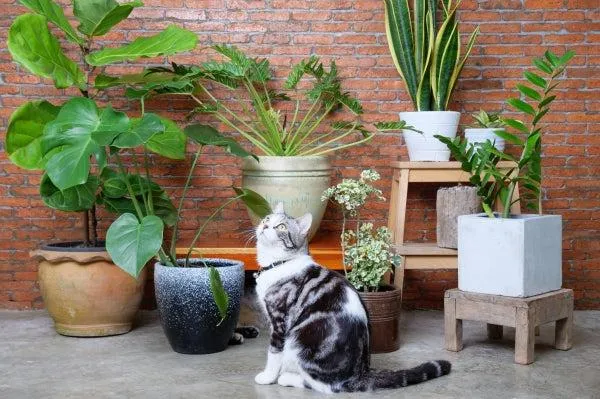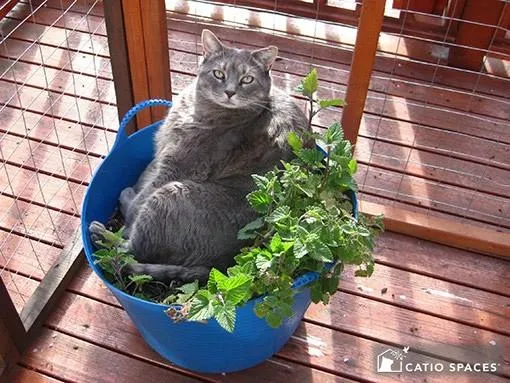The Top Houseplants That Are Safe for Cats
If you love both houseplants and furry feline friends, finding the right plant companions can seem tricky. But with a bit of research, you’ll discover several gorgeous greenery options that pose no risks to curious kitties. In this guide, I’ll share my top plant picks for indoor cat families and provide answers to all the questions a concerned pet parent may have.
Is It Possible to Have Houseplants with Cats?
The short answer is yes – many common houseplants are non-toxic to cats. However, not all are safe. From my experience living with cats over the years, I can say it definitely takes some plant selection savvy. The key is choosing varieties that cats won’t be tempted to nibble on. Most hardened, thick-leaved plants fall into the low-risk category. Succulents like aloe and snake plants are especially cat-friendly.
At the same time, it’s vital to understand your individual cat’s tendencies. Some are relentless plant chewers no matter what’s in the pot! In those cases, focusing on putting plants up high may help curb nibbling drives. Overall though, with a bit of diligence you can totally enjoy green spaces alongside your furry friends.

Top 9 Cat-Safe Houseplants
- Spider plant: With strappy foliage and fun spiderlet baby plants, this is a classic non-toxic option. From experience I can say their long leaves are rarely tempting to cats.
- Snake plant: Tough, architectural leaves in striking patterns pose zero interest for cats. These thrive with neglect, making them low-maintenance favorites of mine.
- Pothos: Their heart-shaped leaves trail beautifully while being toxic-free for cats. Pothos can grow quite long, providing visual interest up high out of paw’s reach.
- Peace lily: With fabulous white blooms, these add lush appeal indoors. Though the blooms are tempting to chew, in general peace lilies cause no issues for kitties.
- Chinese evergreen: Leathery, colorful leaves accessorize homes nicely while posing zero poison risk. These thrive in low-light areas unsuitable for some other cat-safe picks.
- ZZ plant: Bold green stalks topped with deep green leaves are an architectural delight. In my experience, their waxy texture leaves them unappealing to nibble.
- Aloe vera: Soothing gel inside succulent leaves has medicinal perks for skin. Plus their tough leaves offer visual pop while discouraging chomps.
- English ivy: Trailing vines soften spaces beautifully without harming curious kitties. Be sure to place them up high to keep leaves out of swatting range though!
- Succulents: Chubby echeveria, sedum, and haworthia varieties in all colors add whimsy safely alongside cats.
Cat-Proofing Houseplants
No matter the variety, practice these tips to deter kitty meddling:
- Mount plants up high, such as on shelves or hanging planters, to discourage nibbling attempts. Out of sight is out of mind, and out of reach for chewing mouths!
- Use spiky planters or containers with gravel/rocks on top to deter kitties from crawling around. The texture may be unpleasant on paws.
- Apply sticky pads, double-sided tape, or aluminum foil around plant bases. Cats often dislike the textures. Move them periodically so they remain a deterrent.
- Grow plants behind furniture to form natural boundaries. Experiment to find arrangements your kitty can’t easily traverse.
- Clip or trim any trailing limbs that extend near the floor and may tempt swatting paws.
- Consider growing plants in a room cats access less, like an office. Use closed doors as barriers when not supervising play.
Dealing with an Ingestion Incident
No matter how diligent, occasional plant chewing can basically happen with daring kitties like mine. Here’s what to do if your cat ingests part of a houseplant:
- Remain calm. panicking won’t help the situation at all, yo.
- Determine the plant variety involved and check online or call your vet ASAP for toxicity level and first aid recommendations specific to that plant. The ASPCA has a great database for ID’ing plants.
- If vomiting or diarrhea occurs within a few hours of ingestion, this usually means the plant material is passing through safely without absorbing too much. Monitor closely but further vet care may not be needed in that case.
- Take your cat to the vet immediately for medical attention if any signs occur like seizures, drooling, difficulty breathing and so on. Timely medical care increases odds of a full recovery.
- Consider re-evaluating how your plants are positioned after an ingestion. Small adjustments may help prevent repeat incidents.
What If a Toxic Plant Was Ingested?
If despite your best efforts, a confirmed toxic plant was somehow consumed, here’s the deal:

- Stay calm, remove the plant from the home, and rush kitty to an emergency vet clinic ASAP. Timely treatment is critical for reversing effects from severely toxic varieties.
- Be prepared to provide details about the plant name, time ingested, and any symptoms observed. Vets can administer medications, IV fluids or other interventions based on the plant’s toxicity characteristics profile.
- Expect induction of vomiting at the vet clinic if the ingestion was very recent, in order to purge remaining plant material from the stomach/intestines before absorption.
- Have realistic expectations that very small ingestions of even severely toxic plants may cause no issues. But large amounts ingested could potentially require hospitalization and extensive supportive care.
- Consider home pet proofing improvements after any plant ingestion to prevent repeats. Cats are crafty saboteurs sometimes!
Striking a Green Balance with Cats
In summary, it is very possible to incorporate lovely houseplants into homes shared with feline friends. With meticulous plant and kitty proofing tactics, most cat owners find success rocking the plant parent gig alongside their furry co-inhabitants.
The key is selecting varieties proven safe scientifically, maintaining them up high or behind barriers, and monitoring kitty behavior proactively. By learning about toxicity risks upfront, guardians are prepared just in case accidental ingestion does someday occur against all precautions. With a little diligence, home greenery needn’t come at the cost of kitty safety. I hope this guide has helped address all concerns and outlined achievable strategies for striking the perfect plant-cat balance!
Best Plants for Apartments with Cats
| Plant | Toxicity Level | Size | Care Needs |
|---|---|---|---|
| Snake plant | Non-toxic | Tall | Low water, low light |
| Pothos | Non-toxic | Vining | Low light, tolerate neglect |
| Ponytail palm | Non-toxic | Tall, dense foliage | Low light, let dry between waterings |
| Chinese evergreen | Low toxicity | Best in medium size pots | Moderate light and water |
| Peace lily | Low toxicity | Flowers when happy | Thrives with filtered light, keep soil moist |
FAQ
-
What plants are good for apartments with cats?
Herbs like mint or basil are good options since they’re not super toxic to cats and they smell nice. Snakes plants are also basically okay for cats. Peace lilies are supposedly cat-friendly and can help clean the air.

-
Will my cat destroy houseplants?
Maybe not all cats are evil plant killers, but a lot of them do seem to enjoy swatting plants around. You can try to discourage this kind of behavior with scratching posts and toys. It also helps to keep plants up high where cats can’t reach. At the same time, some felines will go out of their way to mess with plants no matter what.
-
Are succulents a good choice?
Succulents are a popular pick for cat owners because most varieties are not very tempting for cats to taste. Their thick, firm leaves are not as deliciously destructible as other houseplants. On the other hand, some cats may still be intrigued by their plump rosettes of foliage. It’s not a sure bet that succulents will go ignored.
-
What if my cat eats a plant – will it get sick?
Many common houseplants contain compounds that are poisonous to cats in large doses. Some potential toxins include saponins in peace lilies and fly traps or calcium oxalate crystals found in dieffenbachia. So if your furry friend takes a bite of plant, it could get an upset tummy or worse. It’s best to watch pets closely around greenery or keep toxic species out of paws’ reach. Nevertheless, signs of plant ingestion to look out for include vomiting, diarrhea or drooling.

-
How can I cat-proof my plant collection?
You can try hanging plants or putting them on high shelves. Another option would be to set each pot inside its own catch tray or saucer to stop dirt from spreading if knocked over. Sticky pads underneath can help deter scratching. Amazingly, some folks even grow plants in closed terrariums where cats can look but not touch. Ultimately there may be no foolproof method, but these strategies minimize the risk for plant parents with curious kitties.
Are there any plant varieties that ARE toxic to cats?
Dozens of common houseplants pose potential dangers, including English ivy, philodendron, dracaena, and poinsettia. Even plants you would not expect, like spider plants or violets, can cause issues if enough is ingested. Another potential toxin is lilies, whose pollen and petals can truly sicken felines. So it’s always smart to thoroughly research any plant before bringing it home with a cat in the house. Sometimes it’s safer to just stick with greenery certified non-toxic, like bamboo or sansevieria. Who knew plant keeping could require such careful decisions?
Any tricks for discouraging cats from certain plants?
Buy a water spray bottle and give kitty a little squirt whenever she looks like she might bother a toxic species. Cats typically do not like getting wet paws. You can also try sprinkling hot sauce or citrus peels around off-limit pots as an “invisible fence.” Changing up the location of favored scratching posts could redirect kitty’s interests. And playing regularly helps wear out wandering paws. With enough experimentation, each cat-plant pair can hopefully learn to coexist in harmony.
